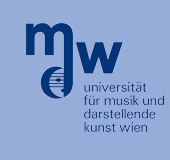Abstract

Monika Dörfler
In a mathematical setting, most commonly used representations of audio signals may be modelled in the time-frequency domain. For musical instrument sounds possessing the same fundamental frequency and onset-time, the difference in timbre can be described via a transition mask. Using this mask, the transition between instrumental timbres may be directly studied. In particular, intermediate timbres can be produced in a controlled manner, i.e. while observing the changes of the time-frequency pattern. In this contribution we will introduce the techniques necessary to understand the approach. In particular, we will point out the importance of judiciously designed time-frequency dictionaries, which allow for perfect reconstruction. This design step requires the inspection of certain operators associated with time-frequency representations. We will show that in situations of practical relevance, these operators are pure multiplication operators and can thus be easily inverted. This inversion step then provides a perfect analysis-synthesis system allowing for controlled coefficient modification. Furthermore, we will show several and play several examples. As an application, the approach is applied to the classification of instrumental sounds.

